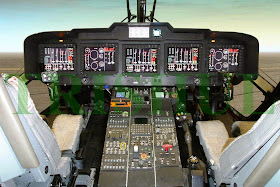









Official press-briefings of the type
given by the Indian Navy (IN) on August 13 regarding the INS Kolkata D-63—the
first of three Project 15A guided-missile destroyers (DDG) on order for the IN—are
always important for two reasons: for what is disclosed, and for what is not.
For instance, while the IN stated that INS Kolkata is 90% indigenous by cost,
it never went beyond that (thereby repeating history, for, on April 29, 2010,
the IN had claimed that the total indigenous effort accounted for 60% of the
cost of producing each Project 17 guided-missile frigate (FFG). My personal
estimation is that in terms of hardware, INS Kolkata can boast of less than 50%
indigenous content. And each Project 15A DDG’s acquisition cost is almost US$950
million (Rs.38 billion),
while that of each Project 17 FFG is US$650 million (Rs.26 billion). The
cost escalation in these two shipbuilding projects has been about 225% for
Project 15A, about 260% for Project 17, with the main reasons contributing
towards cost escalations being: delay in supply of warship-building D-40S steel
by Russia, escalation due to increases in expenditure of the services rendered
by Russian specialists on account of inflation during the build-period, impact
of wage revisions due from October 2003, and finalisation of cost of weapons
and sensors.





INS Kolkata, whose keel was laid down on
September 23, 2003, was launched on March 30, 2006. Therefore, detailed design of
this class of DDG (using TRIBON CAD software) by a joint team comprising the IN’s
in-house Directorate of Naval Design (DND)—which celebrates its 50 years of
existence this year—and the MoD-owned shipbuilder Mazagon Docks Ltd (MDL), should
have been concluded by mid-2002. But this was not to be, since the weapon-and-sensor
fitments were yet to be selected at that time. It was only on January 27, 2006 that
India’s MoD-owned Defence R & D Organisation (DRDO) and Israel Aerospace
Industries (IAI) inked the Barak-2 LR-SAM’s joint five-year joint R & D
contract—valued at US$556 million—following 17 months of exhaustive
negotiations. And the follow-on US$1.1 billion procurement contract for Barak-2
LR-SAMs and the three EL/M-2248 S-band multi-function search-and-target acquisition
radars (MF-STAR)—the first naval active phased-array radars to become
operational with a navy of the Indian Ocean Region (IOR)—was inked in April 2009.
As a result, it can be safely inferred that the DND had finalised only about 70%
of the DDG’s design by 2003.
![]()














What cannot be denied, however, is that
the IN’s DND and its captive centre of excellence—the Weapons & Electronics
Systems Engineering Establishment (WESEE)—along with MDL, have succeeded in fabricating
and delivering an engineering marvel, despite several institutional handicaps.
For instance, designing and building the main mast housing the EL/M-2248 was no
small achievement. This APAR comprises four 3 x 3-metre fixed-array faces (each
weighing 1,500kg) based on a modular tile-array architecture providing full
360-degree coverage. Liquid cooling is
used to dissipate heat at the arrays. The EL/M-2248’s on-board processors and
power-suppliers together weigh 900kg and are housed within six cabinets--two
for the processors and four for the power-supply hardware. The entire MF-STAR suite
thus weighs 6,900kg. In addition to 3-D
long-range airspace volume search, the EL/M-2248 simultaneously provides ASCM
approach warning; target classification; maritime surface surveillance; active
and semi-active SAM support; fire-control for the OTOBreda 76/62 SRGM; and
multiple targets engagement capabilities. It can detect a combat aircraft
flying at high altitude at ranges of up to 250km, while an incoming ASCM can be
detected at ranges of up to 25km.
%2B%26%2BELM-2248%2BMF-STAR.jpg)
The INS Kolkata’s CMS-15A combat management system
(CMS), developed by the WESEE, includes the IAI-developed Weapon Control System (WCS), which performs
threat evaluation and resource allocation functions, thereby optimising the
capabilities of the CMS. The WCS thus provides simultaneous long-range volume
search, threat alert, target verification/acquisition, target classification,
track-while-search, and dedicated track, multi-long-range intercept support,
and kill assessment capabilities. It is also characterised by:
* Wide intercept envelopes against a
wide variety of targets.
* Quick reaction, short response time
and minimum intercept range, these being crucial in scenarios of late target
detection, high-speed attacking weapons, and restrained response policy.
* Long-range area defence.
* Effective against targets from low-altitude
to their maximum operational flight altitude.
* Simultaneous multi-target engagement
capability and multi-missile co-existence capability for ensuring effectiveness
against saturation attacks.
* De-confliction and coordination
capabilities in dense and complex scenarios.
* Advanced ECCM features.
* Built-in threat evaluation, resources allocation
and engagement coordination with other on-board defence systems.
* 2-way data-link with LR-SAMs (housed
within eight 8-cell modules each weighing 1,700kg) increases mission success
and target selectivity by providing the missile with real-time in-flight targetting
updates, and providing real-time kill assessment to support shoot-look-shoot
operations.
* Multi-system interoperability (task
force-level as well as carrier battle group-level operations), under which each
system may operate either as a standalone unit, supported by own sensors for
engagement and guidance; or integrated in a multi-warship task force. Joint
task force-level operation enables coordinated engagement of threats, mission
optimisation (engaging each target with the optimal interceptor, in the optimal
time) and resource sharing.
* Advanced Net-of-Nets architecture to
ensure interoperability with other air-defence assets, such as remote/airborne
radars mounted on aerostats) and external command-and-control centres).
* The Barak-8 LR-SAM’s flexible
dual-pulse motor propulsion system provides high manoeuvrability at target
interception range throughout its wide envelope.
* High-performance missile warhead
specially designed for catering to a wide variety of airborne targets, and
which guarantees robust target destruction.
* Built-in fratricide avoidance for
undertaking safe air-defence operations near friendly air-traffic.
*
Gunnery support capability, including combined missiles/gun engagement.
Expected To Go On-Board In Future
Or

Though
it was way back in late 2007 that the IN was introduced to the concept of operating
remote-controlled RHIBs equipped with dunking sonars, it was only in late 2011
that the IN decided to acquire such systems since, unlike active/passive towed-array variable-depth
sonar, the dunking sonar-on-a-RHIB can be operated in both shallow and deep
waters (up to an operational depth of 300 metres or 985 feet), are easily and quickly
deployed, are much cheaper and impose no restrictions whatsoever on warship
manoeuvrability, especially in situations when a warship is being engaged by
wire-guided heavyweight torpedoes. It is for all these reasons that the IN in
early 2012 refused to order either the NAGAN
active/passive towed-array
variable-depth sonar that was being developed by the DRDO’s Naval Physical
& Oceanographic Labs (NPOL) or the ATLAS Elektronik-developed ATAS, which
had earlier been selected after competitive bidding for the three Project 15
DDGs and three Project 1135.6 Batch-1 FFGs. The IN now plans to acquire a few
ROVs from Textron Systems and equip them with the NPOL-developed LFDS, with all
structural and systems integration work being done by a joint team of personnel
hailing from NPOL and WESEE.





But what accounts for the long delays in
commissioning INS Kolkata? Obviously, MDL cannot be blamed since it is the IN’s
DND that was unable to freeze the Project 15A DDG’s design concept well before
the commencement of hull construction. Another reason for the delay has been
the WESEE’s inability to build either a dedicated shore-based facility for
undertaking weapons-and-systems integration R & D, or to acquire a test
vessel for on-board tests-and-trials of various sensors, weapon systems and
propulsion sub-systems. Contrast this with what China’s PLA Navy (PLAN) has done
for undertaking similar activities: at the PLAN’s Wuhan Naval Research Facility
at Huangjia Lake southeast of Wuhan, a giant full-scale replica of the top-deck,
island and citadel of the PLAN’s first aircraft carrier (Liaoning 16) was
built, and a similar effort is now underway there to build a full-scale mock-up
of the citadel and integrated mast of the PLAN’s futuristic Type 055 DDG.



In addition, since March 1997, the PLAN
has acquired at least three test vessels, with the first of these being the
6,000-tonne Dahua-class vessel (Shiyan 891) that was built by Shanghai-based Hudong-Zhonghua
Shipyard and became operational in January 1998. The second such vessel—Hua
Luogeng 892—was commissioned in August 2005. The third vessel—893—was
commissioned in November 2011. It features a raised-bow breakwater to reduce
water over the bow and a never-before-seen 30-feet-tall, 3-feet-diameter SATCOMS
antenna on the forecastle. The ship has an enclosed foremast instead of the
latticework mast structures found on 891 and 892. The foremast’s three yardarms
feature new paired round flat-faced ESM antennae, plus radomes housing weapons targetting
Ku-band and UHF-band data-link antenna.




















































%2B%26%2BELM-2248%2BMF-STAR.jpg)

















































